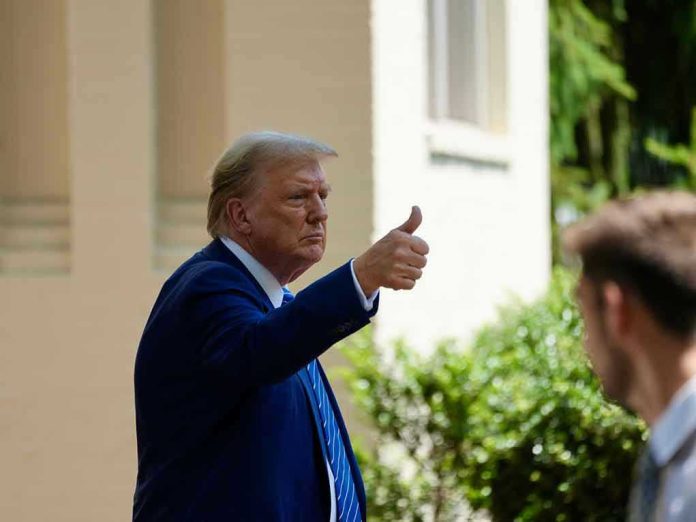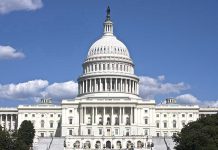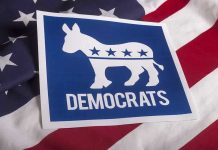
Trump’s promise to hand every American $2,000 from tariffs is more than a campaign headline—it’s a litmus test for how far populist economics can stretch, and how much voters crave bold, direct cash over fiscal reality.
Story Snapshot
- Trump pledges $2,000 “tariff dividend” to every American, funded by import taxes.
- Claims of trillions in tariff revenue clash with official government data and expert analysis.
- Proposal energizes populist supporters but faces skepticism from economists and lawmakers.
- Plan remains a campaign promise, not a concrete legislative initiative.
Trump’s $2,000 Tariff Dividend Promise: The Populist Pitch
Donald Trump has redefined the campaign trail with a promise that’s both simple and seismic: every American gets a $2,000 payout, courtesy of tariffs on foreign goods. The proposal, formally unveiled in rallies and interviews throughout 2024, positions tariffs not as economic pain points, but as a fountain of national wealth waiting to be redistributed. This direct-to-consumer pitch diverges sharply from traditional U.S. trade policy, which historically allocates tariff revenue to government operations rather than personal stimulus checks. Trump’s messaging frames the tariff dividend as a source of prosperity, fueling hopes among supporters and sparking intense debate in media and policy circles.
Official statements claim “trillions of dollars” pouring into the Treasury from tariffs, promising an economic windfall for every citizen. The campaign’s timing is deliberate, surfacing amid ongoing anxiety about inflation, economic inequality, and recovery from pandemic disruptions. For Trump, the promise serves as both a rallying cry and a clear line of attack against establishment approaches, energizing voters who crave direct, tangible benefits over abstract fiscal policies.
The Reality Check: Do Tariffs Really Fund Trillions?
Despite the electrifying rhetoric, government data and economic analysis paint a different picture. Tariffs—essentially taxes on imported goods—have long played a role in U.S. revenue streams. During Trump’s first term, tariffs on Chinese goods reached historic highs, provoking international trade tensions and retaliatory measures. Yet, even at their peak, annual tariff revenues fell dramatically short of the “trillions” claimed, totaling about $79 billion in 2021 according to U.S. Customs and Border Protection. With the U.S. population hovering near 330 million, a $2,000 payout for each person would require $660 billion annually, a figure nearly ten times greater than actual receipts.
Fact-checkers and economists swiftly challenged the feasibility of the proposal. The Peterson Institute for International Economics and the Brookings Institution both confirm that tariffs are paid by U.S. businesses and consumers, not foreign governments. This means that higher tariffs often translate into raised prices for everyday goods, disproportionately impacting consumers and small businesses. Moreover, direct redistribution of tariff revenue is unprecedented, requiring sweeping legislative changes and confronting longstanding fiscal norms in Congress.
Populist Appeal vs. Economic Realities
The allure of Trump’s tariff dividend proposal lies in its clarity and directness: a check in every mailbox, funded by foreign imports. For many voters, this promise recalls the COVID-19 stimulus checks, which provided immediate relief during crisis. However, those payments were financed through deficit spending, not through tariffs. Critics argue that the proposed dividend ignores core economic realities, masking the downstream effects of tariffs—reduced trade volume, higher consumer prices, and potential harm to growth.
Supporters, however, see the plan as a bold assertion of economic nationalism, reclaiming wealth from global competitors and redistributing it domestically. The debate has deepened political polarization, with some populist factions embracing the proposal as a transformative step, while establishment figures on both sides of the aisle express caution. For business and industry groups, especially importers and exporters, the prospect of higher tariffs raises alarms about supply chain costs and competitive disadvantage.
Expert Perspectives and Long-Term Implications
Economic experts remain largely united in their skepticism. Analysts from the Peterson Institute and major news outlets emphasize that the math simply does not add up. Annual tariff revenues are a fraction of the amount needed, and the redistribution model would require rewriting decades of fiscal policy. Political scientists interpret the proposal as a campaign tactic—high on populist appeal, low on legislative feasibility. The short-term impact is unmistakable: the promise fuels voter interest and could influence turnout in the 2024 election. Long-term, if implemented, it would revolutionize the role of tariffs in government, but at significant economic and political cost.
Consumers, businesses, and entire industries would feel the ripple effects. Manufacturers might see protection, but retailers and agricultural producers could be squeezed by rising costs and retaliatory tariffs abroad. The story ultimately reveals a tension between the simplicity of populist messaging and the complexity of economic reality—a tension that will shape the political landscape as the election approaches.
Sources:
U.S. Customs and Border Protection. (2022). Trade Statistics.
Peterson Institute for International Economics. (2023). The Economic Impact of Tariffs.
USTR. (2019). Section 301 Tariff Actions.
CNN. (2024). Trump Campaign Proposals.
Washington Post. (2024). Fact-check: Trump’s Tariff Dividend Claim.
New York Times. (2024). Economic Analysis of Tariff Revenue.
Brookings Institution. (2023). Trade Policy and Economic Redistribution.
Bown, C. (2021). US-China Trade War Tariffs: An Up-to-Date Chart.







